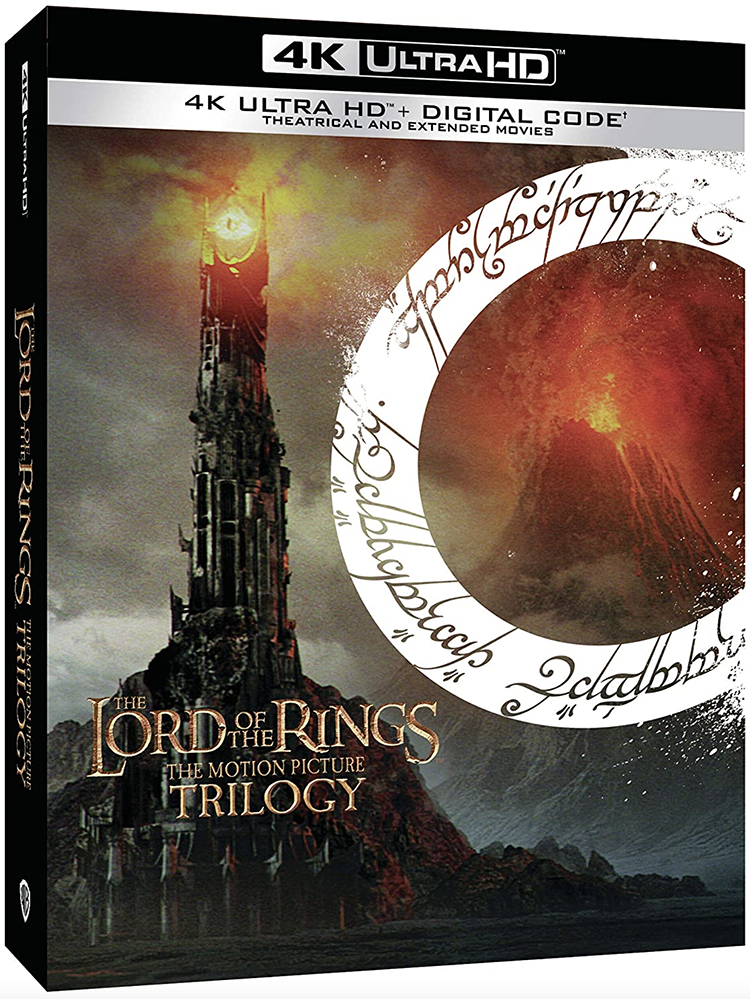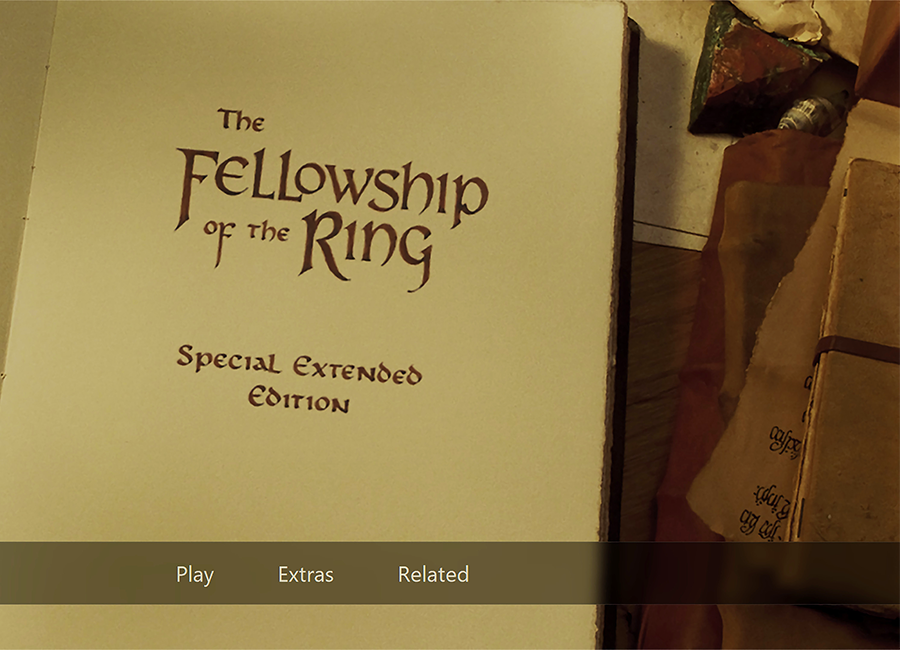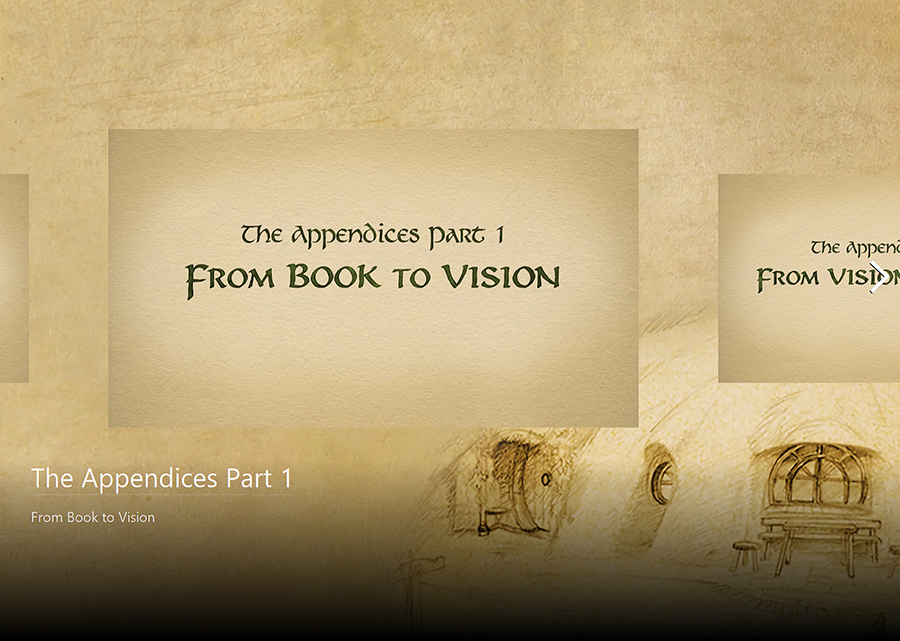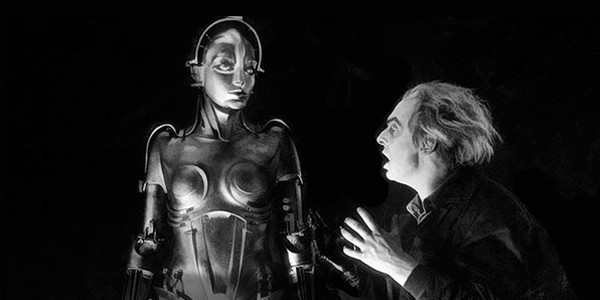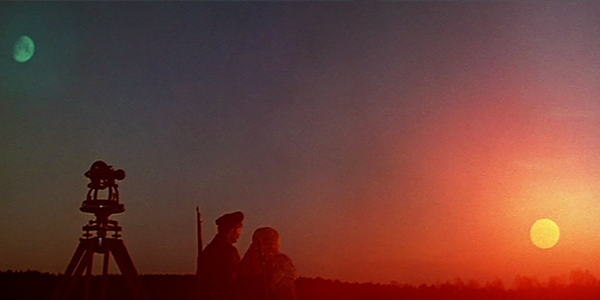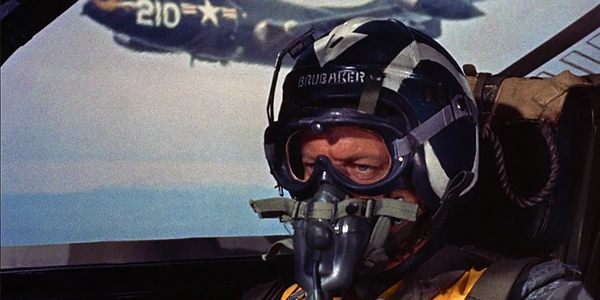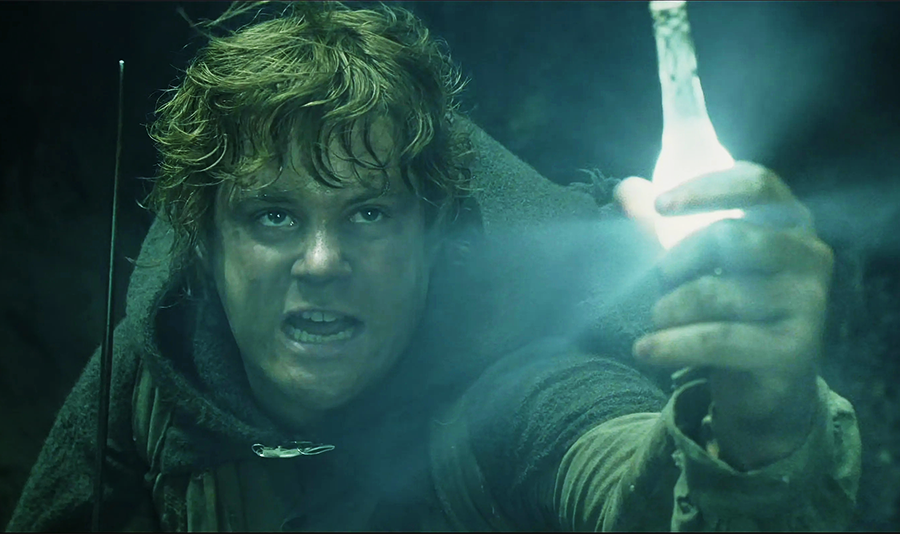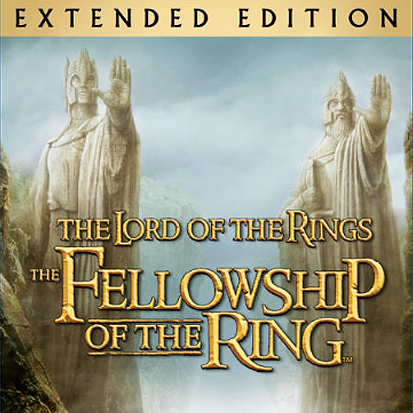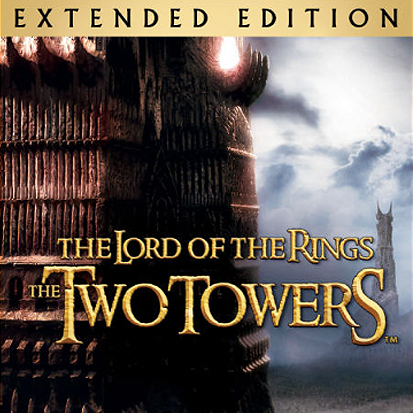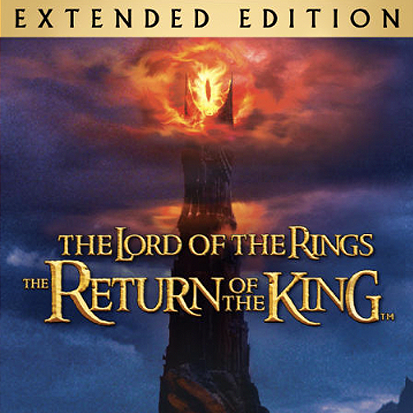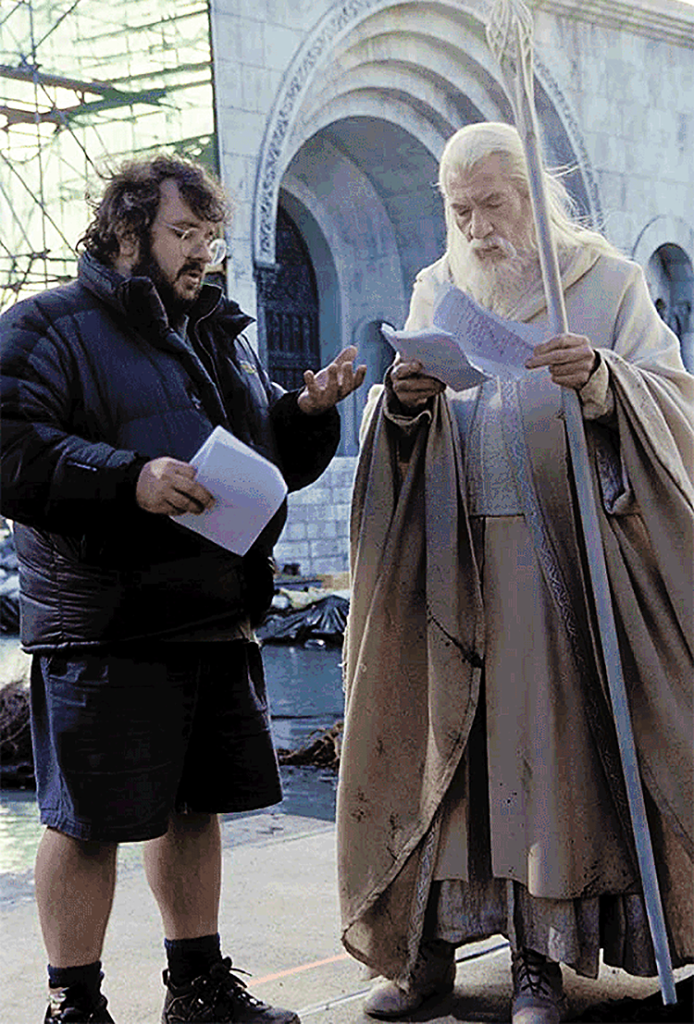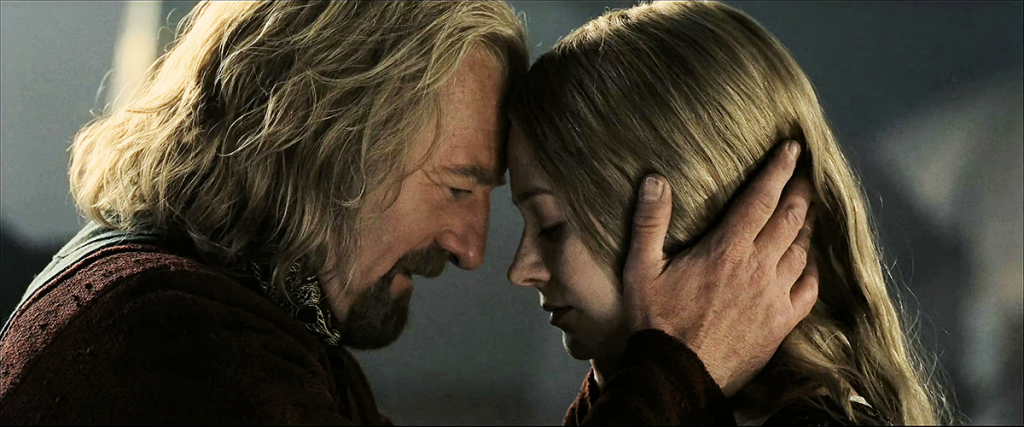
The Cineluxe Comfort Viewing Guide to The Lord of the Rings
menus from the iTunes 4K streaming version of the extended edition of The Fellowship of the Ring
also on Cineluxe
Tackling this legendary trilogy for the first time can be daunting—here’s a map for making that epic journey with ease
by Dennis Burger
updated April 28, 2022
So, you’ve decided to watch Peter Jackson’s epic The Lord of the Rings trilogy for the first time. You’re certainly not alone. More and more, I’m seeing YouTube clips dropped onto my timeline with some variation of the title, “Reacting to Lord of the Rings for the first time” or “I’ve never seen Fellowship of the Ring,” or “FIRST TIME WATCHING Lord of the Rings: The Fellowship of the Ring.”
I don’t understand the appeal of these “reaction” videos any more than you do, but it speaks to the power of these films that so many people are deciding to commit to an 11-plus-hour movie marathon for the first time. Despite its focus on hobbits and elves and dwarves and magical artifacts, The Lord of the Rings is, at its heart, about times like those we’re currently living through. It’s about defiant endurance in the face of uncertainty, about clinging to hope when there seems to be none.
But, my goodness, it can be a daunting endeavor to dig in now if you’re not already a fan. The first question you have to ask, of course, is: “Which version of these films should I watch?”
Wait, there are different versions of The Lord of the Rings?
Yep! There are the theatrical editions, which are the versions people saw on the big screen back in the early aughts. But every November that followed, each film was released in an Extended Edition on DVD, with 30 to 50 minutes of additional footage and hours of in-depth supplementary materials spread across four discs.
Jackson has famously said the theatrical cuts are his preferred edits, and that the Extended Editions are simply “a novelty for the fans.” This is absolute rubbish. The theatrical cuts are a roller coaster of unevenness, with the first and third films—The Fellowship of the Ring and Return of the King—being perfectly enjoyable for what they are, but only as self-contained movies with no connection to the rest of the trilogy. On the other hand, the second film, The Two Towers, is a confusing mess in its original edit. At 178 minutes, it’s a laborious slog, filled with one non sequitur after another, packed with characters whose motivations make little sense. The 228-minute Extended Edition, by contrast, positively whizzes by. It also gives you a deeper understanding of the histories and motives of its primary and secondary protagonists and the mythical lands they populate.
From a purely narrative perspective, the Extended Editions of Fellowship and Return are almost, but not quite, that essential. They do add some much-appreciated depth and context, and also insert some connective tissue that ties the three films together into one unified work. If you skip the Extended Edition of the first film, for example, you may be left wondering where certain items and artifacts central to the plot of the second and third films came from. Watch the shorter theatrical cut of the third film, and one of the second film’s major characters just disappears from the narrative with no explanation and no resolution.
Your best options for viewing the Trilogy
So if you’re committing to watch all three films—and why wouldn’t you?—the Extended Editions are the preferable option. But where to acquire them? The 4K Blu-ray box set released in late 2020 is the most obvious option, as it contains both the theatrical and extended editions so you can compare the differences, if you care to, purely as an academic exercise. The extended trilogy is also available in the digital domain, either in streaming quality via services like iTunes/Apple TV or in full-bandwidth downloads from Kaleidescape.
There are pros and cons to each format, with the main benefit of the physical release being that each Extended Edition film is split across two discs. This actually works to the advantage of The Fellowship of the Ring and Return of the King, though, since you can treat the first and second half of each as a film in its own right. Take a break between each half to take a nap or grab a meal or even sleep for the evening and you won’t disrupt the flow of the experience too much. The Two Towers—the middle film in the trilogy—doesn’t break quite so cleanly, so you’re better off treating it as one long film with a quick potty break between scenes.
If you’re watching on Kaleidescape or iTunes/Apple TV, you don’t get such neat breaks since the films run straight through from opening to closing credits. But you can always hit the Intermission button on your Kaleidescape remote or just hit Pause after “The Council of Elrond” in The Fellowship of the Ring (you’ll know it when you get to it, I promise) and just after “The Siege of Gondor” in Return of the King. (That one’s not quite as obvious, but just remember to take your break right after the orcs start pushing a big flaming battering ram shaped like a wolf’s head toward the gates of the city of Minas Tirith and chanting “Grond! Grond! Grond!” That’s the name of said flaming wolf-headed battering ram.) Make your way through one more disc (or a few more hours of film) after that and you’ve finished your first journey through the lands of Middle-earth.
But if you’re like most people, once you’ve experienced all three films, you’ll be itching to know more about the books that inspired the film and the process of adapting them. That’s where the Appendices come in. Unfortunately, the UHD Blu-ray release lacks the six bonus discs that have accompanied every physical media release since DVD. You can, though, find all six Appendices on Kaleidescape or iTunes.
Making sense of the Appendices
On DVD, HD Blu-ray, iTunes, and Kaleidescape, the Appendices are broken into six parts (two per film, with each Appendix getting its own disc if you opted for physical media for this journey). The neat thing is, they follow a reasonably predictable structure, so if you know for sure you don’t want to watch all 21 hours’ worth of documentaries (not a typo), you can hone in on the sort of background information that interests you most. The odd-numbered Appendices (the first disc or batch of bonus content) tend to dig into the history, themes, and meaning of the books along with the writing and planning that went into adapting this supposedly un-filmable book into three of the best films ever made. Appendices 1, 3, and 5 explore the life of author J.R.R. Tolkien; the publication of the book; the characters, peoples, and locations of Middle-earth; and preparatory work like writing the screenplay, adapting the scripts from two films to a trilogy once Miramax passed on the adaptation and New Line stepped in, designing and building the costumes, sets, props, etc.
The even-numbered Appendices are probably more your speed if you’re primarily interested in The Lord of the Rings as a trilogy of films and not so much as an adapted work. Appendices 2, 4, and 6 look at the long process of shooting the films, as well as post-production work like editing, special effects, sound effects, score music, and so forth.
Watching the films again with friends you’ve never met
“But wait!” he says in his best Billy Mays voice, “There’s more!” Each film is also accompanied by four full-length audio commentaries. Again, there’s some consistency here, with one track for each film focusing on the writing, one on the design, one on production, and one with the cast. The cast commentaries are the best by a long shot, since Sean Astin (who plays Samwise Gamgee) is a walking/talking film encyclopedia and Dominic Monaghan and Billy Boyd (Merry and Pippin) are straight-up laugh-out-loud hilarious throughout. Andy Serkis also performs part of the commentary for Return of the King in character as Sméagol/Gollum, which is something you don’t want to miss. The commentaries featuring Peter Jackson, Fran Walsh, and Philippa Boyens are also absolute gems if you want to take a deeper dive into the story than the documentaries in the Appendices provide.
The other two commentaries for each film are for hardcore fans only, so unless you’re absolutely obsessed by this point, you can safely skip them. To wit, I’ve only listened to the design and production commentaries two or three times over the past two decades. (By contrast, I watch all of 21 hours’ worth of Appendices every other year, and dig into the cast and writers’ commentaries at least once every three years.)
Summing it all up
If all of the above was so laborious that you’ve forgotten it all, here’s a handy cheat sheet to ensure you get the most out of your first viewing of The Lord of the Rings:
● Watch the Extended Editions. Forget the theatrical cuts even exist.
● Buy the films on Kaleidescape, UHD Blu-ray, or iTunes/Apple TV. The other options are too compromised in sundry ways.
● You can treat Fellowship of the Ring and Return of the King each as two-part films. If you need to take a long break at the midway point, the structure of each of these films lends itself to such.
● The Two Towers needs to be approached like one long film, with a quick potty break at most halfway through.
● If you want to explore the supplemental features (and you totally should, even if bonus documentaries aren’t normally your thing) but you’re not sure you’re up for all 21 hours’ worth of extra content, you can go straight to the Appendices that suit your specific interests:
● The first batch for each film (Appendices 1, 3, and 5 in the three-film collection) focus on the book, its author, and the translation from page to screen.
● The second batch for each film (Appendices 2, 4, and 6) are more like your typical movie-making documentaries, with a focus on production and post-production, including filming, special effects, sound, and music.
● Still hungry for more info? Each film comes with four audio commentaries, which range in appeal from “must listen” to “for hardcore nerds only.
● The cast commentaries are amongst the most entertaining audio commentaries ever recorded, as long as you don’t mind a bit of silliness.
● The writers’ commentary with Peter Jackson, Fran Walsh, and Philippa Boyens is like a college course in Tolkien lore and filmmaking.
● If you’re just getting around to watching The Lord of the Rings now, it’s probably safe to say the design and production commentaries are a deeper dive than you’re willing to take. But you never know. Save them for a rainy day (or a Noachian deluge), perhaps.
Dennis Burger is an avid Star Wars scholar, Tolkien fanatic, and Corvette enthusiast who somehow also manages to find time for technological passions including high-end audio, home automation, and video gaming. He lives in the armpit of Alabama with his wife Bethany and their four-legged child Bruno, a 75-pound American Staffordshire Terrier who thinks he’s a Pomeranian.
© 2025 Cineluxe LLC


